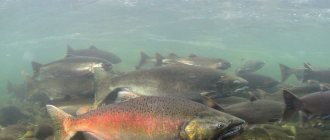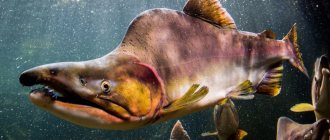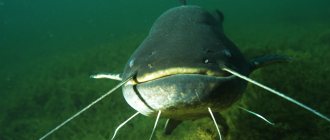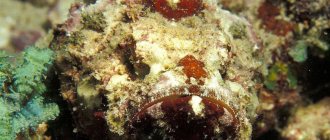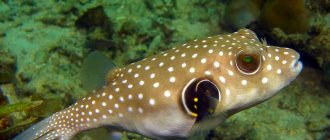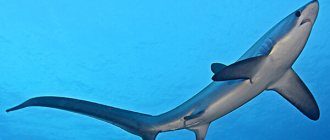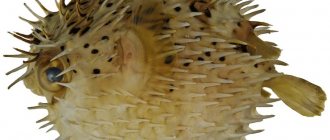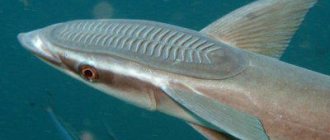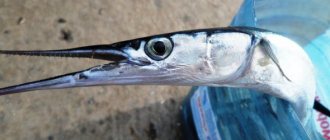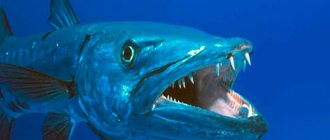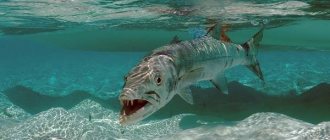Nature is a wonderful world, full of various creatures, both harmless and dangerous to humans. One of the most unusual inhabitants of the deep sea is considered to be a fish that inflates like a balloon. Next we will talk about the hedgehog fish or ball, which belongs to the order of pufferfish. For a long time now, this dangerous creature has not been awe-inspiring with its extraordinary appearance and has successfully lived in home aquariums.
Living in the wild
The fish is widely distributed in many habitats.
Area
Some of the most poisonous representatives of aquatic fauna prefer to occupy territories such as Ceylon, the Philippines, Malaysia, Indonesia, India and other countries.
The hedgehog fish (or its second name is tetraodon) is found in the following waters:
- Congo;
- Amazon;
- Southern Primorye;
- Southeast Asia.
There are fish of various shapes, types and sizes. For example, dwarf individuals live in southern India in sandy ponds. Only sometimes fish from tropical waters are carried by currents to temperate latitudes. Most often, spherical individuals settle near coral growths in order to hide if necessary. With a feeling of security, tetraodon becomes less irritable and angry. Individuals wake up at dawn and fall asleep at sunset.
Where is the Pufferfish found?
Time and region of appearance
| Appearance time: | Anytime |
| Region: | Mondstadt, Li Yue, Inazuma |
All fishing spots
Locations in Mondstadt
|
|
Locations in Li Yue
|
Locations in Inazuma
|
|
Varieties
Different varieties of urchin or dogfish can be found in different types of tropical waters.
Pelagic Diodon
Diodon eydouxii cannot boast of large-scale body dimensions: its length is only 27 cm. There is no data on the level of its toxicity, since there have been no studies of this type of fish. Throughout their lives, individuals lead a pelagic lifestyle without being tied to the surface of the reefs. Eydouxii feeds on fish larvae and zooplankton.
Species features of the variety:
- the sides and back are painted blue and covered with small elongated spots;
- the ends of the dorsal and anal fins are sharply pointed;
- dark, spotted fins;
- silvery with white belly;
- large stripes of dark color on the lower half of the head.
Black-spotted Diodon
Liturosus or Diodon black-spotted lives at a depth of 1 to 90 m on reefs, but is more often found at a depth of 15 to 30 m. The longest body length is 65 cm. Liturosus is poisonous, and it can be recognized from other fish by its characteristic features.
Black-spotted Diodon looks like this:
- the whole body is covered with short needles;
- the body is light and covered with several rounded patterns that do not have a clear shape;
- dark areas on the body are outlined with a white border near the back in the head area;
- in front of each gill slit there is a large dark brown darkening;
- there are small dark spots on the back and near the anus;
- under the eye there is a large dark mark going downwards, but above the eye there is no such mark.
Common or spotted fin diodon
When at rest, the spotted fin species is easily confused with the long-spined species, because the simple Diodon also has long spines.
Upon closer examination, you can see the following distinctive features:
- gray-brown body color with numerous small dark areas without large ones;
- large fins are completely covered with small dark dots;
- there are also spots on the white belly, but their color is less saturated.
There are other differences in the structure of individuals: the rounded ends of the anal and dorsal fins, needles on the underside of the caudal peduncle.
The length of the round fish's body reaches 90 cm, and its weight reaches 3 kg. But such giants are rare, since the most common individuals are 40 cm long. They live at a depth of 3 to 50 m in the area where corals are located. Fish is poisonous, so it is not recommended to eat it.
Long-spined diodon
Diodon holokanthus is the most widespread representative of diodon, which has a lot of visual differences in color.
For example:
- there are “rusty” areas on the back;
- There are also brownish marks near the eyes, slightly above and below the eyes;
- on the head and sides, many small dots are clearly visible between the spots;
- fins are monochromatic, slightly yellowish or transparent;
- there are no needles on the tail stalk;
- the abdomen is light.
The photo of the long-spined hedgehog shows the color features of mature individuals. In young fish, spots are also visible on the belly. Individuals grow up to 50 cm in fresh water, and up to 15 cm in an aquarium.
Behavior and eating habits
If the Japanese fish senses any danger, within a few minutes it will inflate to the size of a huge ball, on the surface of which there are small spikes. In this, a fish called a blenny is helped by a special air sac that connects to the abdominal cavity. When it is filled with air or water, it begins to rapidly increase in volume. It takes on a spherical shape, its appearance becomes terrifying. This way it is inaccessible to predators; it simply will not fit into their mouths. This unique ability gave the fish another name - inflatable.
When the danger has passed, the Japanese fish gradually begins to release liquid from its mouth and returns to its original size. Another feature of this representative of the aquatic fauna is the absence of fins on the surface of the abdomen. The active work of the pectoral fins compensates for this deficiency. With the help of pectoral fins, the dogfish from Japan can move quickly and easily in different directions. This increases maneuverability. And the skalozub uses the tail section as a rudder.
Lifestyle
The fish that swells has become famous all over the world for its appearance and behavior.
In dangerous moments
This seemingly interesting and friendly fish knows how to protect itself in case of danger. Representatives of any species or subspecies have one distinctive feature that allows them to be distinguished from the entire mass of living creatures of the fauna.
This trait is the ability to swell to immense dimensions. When a stressful situation occurs, diodons turn into a ball (in some cases with large poisonous spines), and cease to look like a fish. Bloating occurs by filling special hollow chambers in the body with water or gas.
The poisonous pufferfish is filled with cyanide, making it deadly to others. These fish swim slowly and move clumsily, as they have nothing to fear in any water. Its spines are not poisonous, but the milt, intestines, liver, eggs and skin are deadly.
People call these inhabitants of the deep waters differently: hedgehog, dog, ball - they all protect themselves from irritants by inflating.
Predators do not attack hedgehogs for the following reasons:
- when scared away, hedgehogs increase in size and become 4 times their original size;
- filled not only with water, but also with a specific gas;
- are considered the most poisonous.
Only a predator such as a shark attacks the ball fish first and eats it without fear.
Aquarium compatibility
Tetraodon can easily gnaw the fins of an unlucky neighbor or tear it into pieces, so individual keeping in a species aquarium is considered ideal, and only in extreme cases can they be placed with other inhabitants.
Due to the fact that the ball fish is extremely aggressive, keeping it together with other neighbors in the aquarium is problematic. It is better to choose a neighborhood with those species of fish that can swim actively and quickly.
For example:
- African cichlids, which get along more or less friendly with a dangerous predator;
- Malawian cichlids are good neighbors for “bullies” who, due to the strange shape of their body, do not perceive the pufferfish as a fish and do not deign to pay attention to them.
The only condition is that the neighbors must be similar in size to the spherical predator.
Description
The characteristics and anatomical structure of the four-toothed representative of the family are as follows:
- the surface of the back is wide, along the lateral parts it is slightly flattened;
- there are no scales on the surface of the body, some species of blenny have small growths - spines, they fit tightly to the skin;
- the head is massive, dense and thick, there is a semblance of a beak;
- on the surface of the dentition there are two pointed and strong growths in the form of large fangs.
Depending on the species, the body will be painted a certain color. It ranges from beige to dark silver. There are also dark spots and inclusions on the surface of the body. Some varieties have a variegated color, purple with intense yellow stripes.
Yandex pictures
The four-toothed Japanese blenny bites off and chews coral reef shoots with its powerful jaws. That is why it is called a rocktooth.
Interesting. A huge amount of calcareous deposits regularly enters the abdominal cavity of each such representative of marine fauna. These fish are directly involved in creating beautiful white sand on the coasts of tropical beaches. The favorite delicacy of fish that looks like a dog are crabs, crustaceans, and various mollusks. The ocean dweller easily gnaws their shells with her powerful jaws.
Important! The skin, milk, caviar and peritoneum of the four-toothed fish are poisonous. The poison has a nerve-paralytic effect.
The rocktooth contains a poison called tetrodotoxin. An antidote against it has not yet been invented. In Japan, it is a delicacy, famous throughout the world for fugu fish. Many varieties of it are dangerous, so you should not try to prepare them at home yourself. Only special restaurants with experienced chefs can offer such a dish, and it will be safe. It is prepared by specially trained chefs with the appropriate license. The taste of this fish is reminiscent of the delicate taste of a young chicken, and the finished meat looks appetizing. When consumed, the following may occur: a feeling of warmth in the body, tingling and slight numbness of the tongue and lips. These are the symptoms that indicate poisoning. Further, the symptoms increase, the following appear:
- sharp pain in the abdomen;
- pain in the arms, legs and head;
- bouts of vomiting;
- further coordination and speech are impaired;
- pressure drops;
- body temperature drops;
- shortness of breath occurs.
Sometimes death occurs after consuming the product and not providing timely assistance.
Keeping at home
Keeping unusual hedgehogs requires the owners to create certain conditions.
Important:
- it is necessary to systematically carry out aeration and filtration of water;
- Every day 1/10 of the aquarium water should be changed to new water;
- for the constantly growing sharp teeth of pufferfish, it is necessary to include hard-shelled mollusks or any representatives of crustaceans in the diet;
- It is better to keep the fry of predators in an individual dwelling so that they are not eaten by “hooligan” relatives.
Choosing an aquarium
The right aquarium will make the life of its inhabitants comfortable and long.
Criteria for creating a comfortable aquarium:
- The volume of the aquarium should be at least 50 liters for a pair of fish, and for group living - at least 100-250 liters.
- The puffer fish spends most of the day in the lower half of the dwelling, so the bottom should be covered with a thick layer of sand.
- It is better to plant plants with tough foliage inside.
- Due to the fact that Tetraodon prefers to hide in shelters, it is better to “stuff” the aquarium with a variety of appropriately sized tunnels and locks.
Water parameters
The water in the aquarium must meet certain criteria.
Options:
- It is better to keep the temperature at 26-28 degrees so that it reminds the puffer of a tropical place of residence.
- Aim to maintain a pH of 6.5-7.5.
- Only some varieties prefer fresh water, so it will need to be salted.
- Tetraodons are overly sensitive to ammonia and nitrates, and are picky about the overall quality of the fluid.
- Do not skip the daily 1/3 water change or turn off filtration.
Diet in the aquarium
The fish has terrifying jaws. The teeth on them merge into 4 monolithic plates and can even bite through fishing gear. Pufferfish are called “four-toothed” (lat. Tetraodontidae). Individuals are voracious and require constant feeding.
The main diet includes live food, shellfish, shrimp, crabs, starfish and urchins, squid, pieces of fish, mussels, minced meat. When using dry plankton, it must first be soaked. Sometimes you can use herbivore food.
The teeth of the rocktooth are constantly growing, so hard food is a necessary component for grinding them down.
Feeding
The diet determines the health of the inhabitants of the aquatic depths.
What do they eat in nature?
In nature, the ball slave prefers to eat live types of food: snails, large bloodworms, fish fry, worms, and tubifex worms.
For aquarium keeping
Due to the fact that the pufferfish's teeth constantly grow, they need to be constantly sharpened, so from time to time they need to introduce shelled snails into their diet. An aquarium fish will rejoice at a beef heart or liver that has been minced into a meat grinder. If you exclude such food from the diet of predatory fish, its lifespan will be reduced by 3 times with a normal life of 10 years. Fish do not like green types of food.
Selection and arrangement of an aquarium
An aquarium for a fish ball can be of any shape. But fish love to jump, so a lid on the aquarium is highly desirable.
Volume
The volume for dwarf tetraodon is 1 to 15 liters per fish. For larger ones - 50-100 liters.
Equipment
Round fish are very voracious and produce large amounts of waste. Therefore, external filtration with a capacity of 7–10 volumes of your aquarium per hour is necessary. As an external filter for one pet, you can suggest Tetra EX 600 Plus, for several – Tetra EX 1200 Plus. If the aquarium population is closer to the maximum, aeration is also necessary.
Lighting for work is standard, 40–60 lumens per liter of capacity. It is advisable to use fluorescent and LED lamps with a cold range (from 6000 K). The required length of daylight for fish is 10–12 hours.
Water requirements
PH (acid-base balance) – 6.5–8.
KH (hardness) – 1.5-9 °H.
t (temperature) – 23-28 °C.
Some species of these fish require salting the water. Table salt or bath salt are not suitable for this; you need to use special aquarium sea salt from a pet store. It is necessary to increase the salinity of water gradually.
Plants, decorations and soil
The soil and decorations should not have sharp parts - the fish will gnaw them and may get injured. In addition, their bare skin is very sensitive. To prevent waste from packing into the substrate, it must be dense enough.
This aquarium fish loves privacy, so you need to create secluded corners for it with the help of plants and decorations. Boulders, driftwood, and ceramics are suitable. Plants need to be planted more densely so that natural thickets form.
Diseases and their treatment
Untimely treatment of diseases can cause the death of fish.
The most common diseases:
- anoxia - a lack of oxygen, in which the gills of an aquarium inhabitant open and active respiratory movements are visible; you just need to move the individuals to another oxygen-rich vessel, change the water, and increase air circulation;
- cold - the individual becomes lethargic and lifeless, this happens due to low air temperature;
- chlorine poisoning – there is a decrease in motor activity and appetite. It is imperative to monitor the water condition readings;
- fungal diseases - areas with mold growths or moss-like growths appear on the body; individuals should be removed from the aquarium, the water replaced, and equipment disinfected;
- gastrointestinal disorder - predators definitely require animal food, if it is not given, the fish may lose activity and die.
Composition and beneficial properties
In terms of its chemical composition, fugu is practically no different from other representatives of this class. It contains a unique vitamin and mineral complex. Its energy value is approximately 108 kcal. It contains protein that is easy for the body (16.4 grams) and about 2 grams of fat.
The neurotoxin contained in it in huge quantities is used in medicine to prevent certain diseases and have a long-term analgesic effect.
Despite the deadly poison in its composition, this fish is in great demand in cooking. Those who like to “tickle their nerves” shell out considerable sums to try this unsafe dish.
At the moment, there is an artificially bred type of fugu that does not contain a dangerous toxin, but it is not at all popular. The most valuable things about it are the thrill, the emotional outburst and the huge surge of adrenaline that accompany eating fugu. Some even consider eating such fish a kind of Russian roulette.
Reproduction
Pufferfish and other fish of this class are extremely difficult to breed in an aquarium.
Aquarium preparation
Fish reach sexual maturity at the age of 1 to 3 years. To stimulate the start of spawning, you need to heat the water in the aquarium to a temperature of 30 degrees and change at least half of the water. It is better to introduce an earthworm into the menu, after placing the worm in the sand to empty the intestines.
Spawning
Individuals are difficult to distinguish by gender. Males are usually smaller than females and have a paler color. During the spawning period, the female can lay up to 300-500 eggs, and the male takes care of the offspring. Already on the 10th day, the parents stop caring for the fry and they begin to live independently.
During the spawning process, fish act carefully so as not to scratch each other. The male pushes the female higher towards the surface of the water. The female immediately lays eggs, and the male fertilizes the eggs.
Stages of fry growth
The act of fertilization ends quickly and the fish does not need additional care.
Stages of growing up of fry:
- After 5-7 days, red-yellow fry are born, which have a formed muzzle and fins.
- In the first 14 days, the fry have a narrow shell, but soon it disappears and needles appear in its place.
- After a month, it is difficult to distinguish young fish from adult fish, except perhaps by slightly smaller body dimensions. Young individuals love to circle around water thickets.
- A young pufferfish is much brighter than a mature one.
Maintenance and care
Every week you need to change a quarter of the water in the aquarium, not forgetting to add salt to it. The bottom must be cleared of waste as it becomes dirty. Accumulated rotting organic matter acidifies the water, which is bad for fish.
What to feed?
The main food of the ball fish in nature is snails and shells. Tetraodon teeth grow constantly and need to be ground down. Otherwise, the fish lose their appetite and may get sick.
Additionally, you can give bloodworms, coretra, and tubifex. At the same time, it is extremely undesirable to obtain live food yourself in natural reservoirs - it may be infected with infection or parasites.
You can also use frozen food, sea fish and shrimp meat, and boiled chopped liver. If fish eat plants, it is good to add vegetables to the diet.
Dry food is contraindicated; it leads to illness and death of fish.
You need to feed once a day, not to satiety (you won’t be able to), but for two minutes. This is enough for the fish.
How long do they live?
The lifespan of a ball fish in an aquarium is 5-10 years.
You should not scare the balloon fish by causing it to inflate. An inflated fish not only experiences severe stress, this condition puts increased stress on many organs. This is not safe for fish.
Compatibility with other fish
Pufferfish do not get along with other types of fish. He eats small ones. He fights with big ones. The bright and tailed ones eat the fins. It is better to keep Tetraodon in a species aquarium.
Also, these fish are incompatible with snails and shrimp - they are their natural food in nature.
Poisonous delicacy
Every year, hundreds of thousands of people try to try a dangerous delicacy made from puffer fish or fugu, relying only on the professionalism of the cook. One wrong move and a fish delicacy can spell death for a restaurant guest. 60% of those poisoned by fish die within 24 hours; this is the time period that is considered critical.
Symptoms of fugu poisoning:
- After 15-20 minutes, a tingling sensation is felt in the lips, the tongue becomes numb, the clarity of movements is impaired, strong salivation and weakness in the muscles appear.
- If the portion of poison eaten is large, then the sensations soon spread throughout the body, accompanied by indigestion and vomiting.
- Death occurs from respiratory arrest, since the muscles that provide breathing cease to receive the necessary impulses from the brain.
- It has not yet been clarified why the poison does not affect the host itself, and why non-poisonous individuals, when placed in an aquarium with poisonous ones, also acquire the ability to poison.
How to cook safely
Even despite the poison and the threat of death (and perhaps that’s why), fugu fish is considered an elite treat.
Before serving this extreme treat, you should:
- wear sterile gloves;
- peel the meat from the skin to the slightest shred;
- gut the belly;
- Use tweezers to pull out the protruding bones;
- wash all parts of the carcass;
- cut the meat into slices and send to the table.
Inexperienced cooks should not cook fugu. The specialist must first undergo training in preparing pufferfish.
An interesting fact is that the chef’s highest culinary aerobatics is considered to be the ability to gut the fugu, leaving a little poison in it, which produces an effect on the client similar to drug intoxication.
The cost of such a delicacy reaches up to $1,000 from famous Japanese chefs.
What does it eat?
In the food chain, fugu fish, oddly enough, is one of the types of predators. Its diet is not varied, tasty and appetizing even when viewed from the point of view of the animal world. What is it that she eats and eats that is so unpleasant for many?
Its main diet consists of sea worms, arthropods, sea urchins and stars, as well as various algae, sea grass, it also eats various mollusks and bites into corals. However, food can change radically without harming the sea life itself in any way. Fugu eats various types of moths, crustaceans that have a hard shell. If an individual gets from its usual place of residence into an aquarium, then it is sometimes fed quite strange foods: minced beef or raw liver, heart, various animals, all this is perfectly absorbed in its digestive tract and does not harm it in any way.
However, despite such a specific diet, there is a very interesting and no less strange fact: unlike many fish representatives, Fugu is absolutely contraindicated for eating dry food; it cannot eat it. It is not digested or absorbed in the intestines of this marine predator, which causes great harm to it. Many scientists around the world who have studied this inhabitant have come to the conclusion and began to argue that the poison and toxicity of fish depends precisely on what exactly the fish eats, because the toxin that accumulates in it depends precisely on the bacteria that are in its food, although this poison does not harm her in any way. However, why the fish became poisonous is still unknown.
Interesting Facts
The life of a special inhabitant of the water depths has acquired a lot of interesting facts.
For example:
- according to scientists, males in nature attract a female by drawing a beautiful circle in the sand with their fins; the female chooses a partner based on the beauty of the circle;
- the poison of one fugu can kill 20 people;
- in 1500, the army died from poison, and after that the fugu delicacy was banned for two hundred years; in 1700, the official Hirobumu Ito appreciated the magic of the taste and lifted his veto on its preparation;
- customers who want to eat fugu are served sake infused with fish fins; this drink will significantly increase a person’s chance of staying alive even after serious poisoning;
- Every year in Japan, 15-20 people die trying to cook fugu with their own hands;
- The pufferfish (pufferfish) has no scales, the skin is elastic with small spines.
Keeping predators is not an easy task, but proper care and proper nutrition of the fish will help you gain new experience and surprise any visiting guest.
Application in medicine
Several centuries ago in the East, powdered fugu was mixed with other animal ingredients and taken as a pain reliever. The patients soon recovered, their vigor and high spirits were noted.
Ancient healers in the old days often used the following recipe to treat patients: the poisonous insides of fugu were soaked for seven days in vinegar, then mixed with flour and honey. Small balls were rolled from this mixture. They were prescribed for diseases such as:
- leprosy;
- mental disorders;
- heart failure;
- cough;
- headache [7].
In very small doses, fugu venom was used for the prevention of age-related diseases, for the treatment of the prostate gland, arthritis, rheumatism, neuralgic pain, and also as an anesthetic for inoperable forms of cancer [8]. The standards for the neurotoxin were clearly established, at which its toxic properties were practically absent, and its medicinal qualities came to the fore.
Currently, tetrodotoxin is practically not used for medical purposes due to its extreme toxicity [9]. It is much safer to use novocaine or other anesthetic drugs with similar properties for such purposes. Tetrodotoxin has recently been tested in a laboratory as a pain-relieving drug for cancer patients, but the results have been controversial. Currently, research on tetrodotoxin in this area continues [10]. It is widely used to study cell membranes by biological scientists.
Puffer fish poison
The poison of puffer fish is tetrodotoxin. A neurotoxin that blocks electrical impulses in nerves by disrupting the flow of sodium ions into nerve cells. Tetrodotoxin is approximately 500 to 1,000 times more potent than potassium cyanide.
One gram of fugu venom is enough to kill 500 people and there is no known antidote. This poison in Japan is called only teppo (“pistol”). It comes from the expression teppo ni ataru ("to be shot"). The word ataru also means "to suffer from food poisoning."
The venom causes dizziness, numbness of the mouth and lips, weakness, nausea, diarrhea, sweating, breathing problems, seizures, blue lips, intense itching, and vomiting. Victims who eat a lot of fugu literally turn into zombies when they realize what's happening but can't even move. Some fugu are poisonous and some are not, but even experts can't explain why. Some scientists believe that fugu is not naturally toxic. They claim that pufferfish get their poison from eating bacteria found in creatures such as starfish, worms and other shellfish. Many people disagree with them, claiming that fugu produces poison through glands under the skin.
Scientists in Nagasaki developed a non-poisonous species of fugu by feeding the fish mackerel and other non-poisonous foods. Fans appreciated its taste and said that it was as pleasant as that of fugu with poisonous organs. Many restaurants immediately took a keen interest in the liver of the non-poisonous fugu, because this part of the fish is usually prohibited. But many have rightly stated that “Non-toxic fugu is boring. This fish is attractive precisely because of its toxicity.”
Symptoms of poisoning and first aid
Symptoms of tetrodotoxin poisoning appear within the first 10-15 minutes after eating puffer fish. Their rapid manifestation indicates a large amount of poison in the body. The symptoms are very similar in terms of cardiological and neurological signs: numbness, dizziness, burning in the body, impaired coordination of movements and speech, hypotension, a sharp decrease in pulse and heaviness in breathing. In more severe forms - impaired consciousness, convulsions and death.
Four degrees of severity of poisoning can be distinguished:
- First degree: numbness and tingling in the nasolabial area, nausea, vomiting.
- Second degree: complete numbness of the muscles of the face, tongue, hands and feet, impaired coordination of movements and speech, partial early paralysis, normal response to muscle contractions.
- Third degree: flaccid paralysis of the whole body, severe shortness of breath, aphonia, enlarged and dilated pupils, clarity of consciousness is preserved.
- Fourth degree: acute respiratory failure, hypoxia, sharp decrease in blood pressure, arrhythmia, slow heart rate, possible loss of consciousness [13].
Best materials of the month
- Coronaviruses: SARS-CoV-2 (COVID-19)
- Antibiotics for the prevention and treatment of COVID-19: how effective are they?
- The most common "office" diseases
- Does vodka kill coronavirus?
- How to stay alive on our roads?
There is currently no antidote for this terrible neurotoxin. First aid and treatment consist mainly of symptomatic and supportive therapy. For any degree of poisoning, victims must be hospitalized for artificial support of the respiratory system and circulatory system until the peak of the poison’s effect passes. Usually, dire consequences are unlikely after 24 hours of poisoning.
Natural enemies of puffer fish
Photo: Fugu
Despite the fact that the puffer fish has a rather small size and low movement speed, it has practically no natural enemies. The defense mechanisms of the puffer fish are too dangerous and fatal for any predator.
Even if someone swallows a puffer fish, it inflates and increases in size, the needles pierce the predator who dared to eat the puffer. They pierce all sorts of organs, causing enormous damage, and if the predator does not die from this, then soon a deadly poison begins to act, which finishes off the attacker. Most predators do not connect with this fish on a subconscious level.
The same predators that may not notice its protection (for example, sharks) do not hunt on the bottom, which further protects the puffer. The main threat to pufferfish is humans. Despite the danger of eating fugu, a dish made from this fish is becoming increasingly popular, which increases the catch and destruction of this fish.
Interesting fact: Puffer fish venom in very small doses is an excellent analgesic; it is used by some pharmacological companies.
Population and species status
Photo: Poisonous fugu fish
Of the 26 species of Takifigu, 24 are not in any danger of extinction. Only Takifugu chinensis and Takifugu plagiocellatus face certain threats. At the same time, the threat of extinction for Takifugu chinensis is quite significant and this species is on the verge of extinction. Scientists have begun to restore this species in artificial reservoirs, but this measure may not bring results.
In its natural habitat, there is practically nothing that threatens the population, since the fish is devoid of natural enemies. An exception could be human activity, which could aggravate the situation, but at the moment there is no such threat.
There is also no increase in the puffer fish population. This is due to natural control. Fugu is a solitary fish and cases where a male and a female meet are not so frequent, moreover, the offspring grow almost independently and the fry often become food for other predators.
The puffer fish is a slow, awkward fish that has an impressive defensive arsenal that instills fear in many aquatic inhabitants. Most likely, it would not have attracted such close attention if the Japanese dish made from it had not been so dangerous and advertised. The absence of natural enemies guarantees this species a long existence on our planet.
Where does the puffer fish live?
Photo: Poisonous puffer fish
The habitat of the fugu fish is quite extensive; it lives in:
- Sea of Okhotsk;
- Yellow sea;
- East China Sea;
- Pacific Ocean;
- Sea of Japan.
Puffer fish is a low-boreal Asian species. The main habitat of its habitat can be considered the waters adjacent to Japan. Puffer fish can also be found in the Russian waters of the Sea of Japan, but it lives there mainly in the summer.
Fugu fry are born at a depth of about 20 meters and gradually go deeper over time. Large individuals of this species prefer to be at a depth of about 80-100 meters. The fish prefers quiet, calm places near various bays. They prefer to be closer to the bottom, where various algae and bottom topography additionally help them protect themselves from predators.
Puffer fish can also be found in fresh water bodies of rivers:
- Niger;
- Nile;
- Congo;
- Amazon.
Interesting fact: the puffer fish, unlike many fish, has big problems with aerodynamics, which does not allow it to develop high speed, it is very slow, but at the same time it can swim sideways and even backwards.

